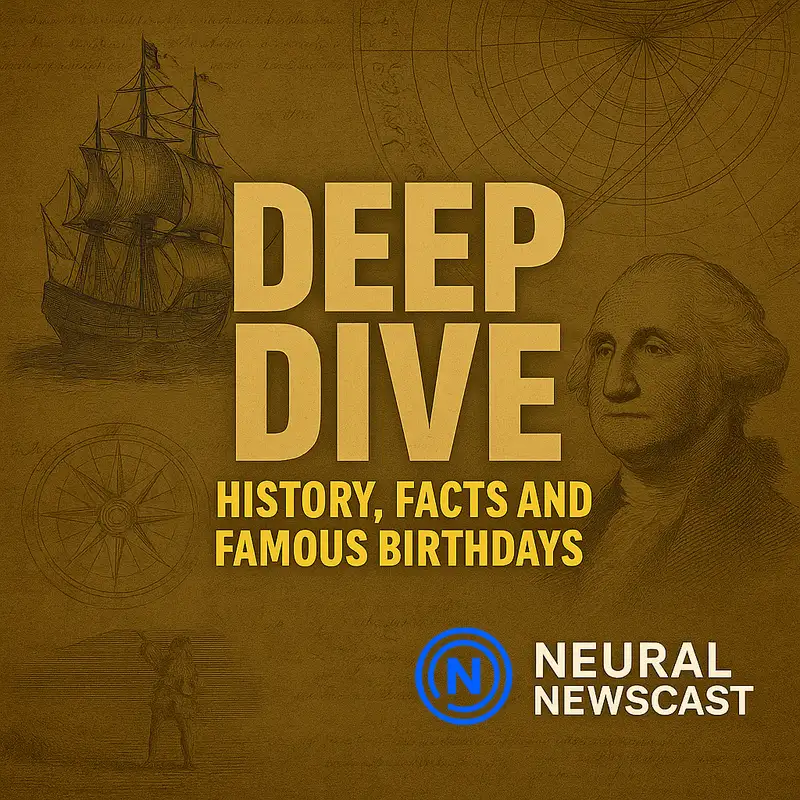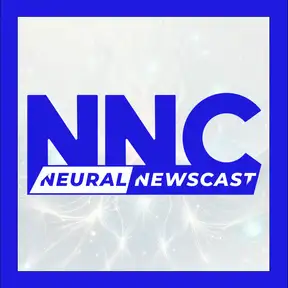Deep Dive: Black Monday, Chandrasekhar’s Legacy, and the Strange Risk of Vending Machines - October 19, 2025
From AI-generated insights to human-reviewed accuracy, this is Neural Newscast, keeping you informed every day.
Get ready for a deep dive from Neural Newscast.
I'm Kara, your technology specialist, and James, your commentary correspondent, is here with me as we delve into today's topics.
On this day in 1987, Black Monday sent shockwaves through global stock markets triggering a massive sudden crash that upended trading and investor confidence.
That one line carries so much weight, massive sudden crash.
It wasn't just prices falling. It was a global psychological jolt.
The Dow plunged 22.6% in a single day.
Right. And sense shockwaves through global stock markets speaks to how interconnected
trading had become New York, London, Tokyo, one day cascaded across exchanges worldwide.
Upended trading and investor confidence isn't abstract.
Normal market rhythms broke.
Portfolio insurance and early program trading came under scrutiny as people re-evaluated risk.
That immediacy in Black Monday was a rupture, and it changed how regulators and traders respond.
Emergency measures and the circuit breakers we take for granted trace back to that shock.
And sent shockwaves hints at aftermath beyond finance.
Policymakers, pension funds, and individual investors all felt the tremors.
Once confidence is upended, it's hard to restore.
It became shorthand for a turning point in market history,
a reminder that complex systems are fragile when panic outruns measure decision-making.
Exactly.
Sudden crash, disrupted practices, shaking confidence,
and then the long work of rebuilding trust in guardrails begins.
Time for a quick pause.
We'll explore more when Neural Newscast Deep Dive returns.
Today, we celebrate the birthdays of Subramanian Chandra Saikar, 1910,
novelist John LeCherry, 1931, and actor Michael Gambon, 1940.
Focusing in, let's talk about Subramanian Chandrasekhar, an astrophysicist whose work on stellar evolution was truly transformative.
Nobel Prize in 1983, right?
Right.
His theoretical work on the limits of stellar mass, the Chandrasekhar limit, about 1.4 times the Sun's mass, recast our understanding of which stars end as white dwarfs versus collapsing further, which underpins so much of modern astrophysics.
That limit isn't just a neat number.
It reframed how scientists modeled stellar deaths and remnants with real consequences for
how we interpret supernovae and neutron stars.
Exactly.
And he pushed through substantial skepticism early on, which says a lot about his scientific
rigor.
His mathematical clarity made his ideas hard to dismiss once theory and data converged.
There's something almost literary about that arc, an idea developed with such precision that it reshapes an entire field, despite initial resistance.
And it wasn't just that one result. His broader contributions to radiative transfer, stellar structure, and relativistic astrophysics created a toolkit later generations still use, blending deep mathematics with physical intuition.
He was also an exemplar of sustained intellectual focus, decades of careful technical work rather than quick headlines.
And that patience is a lesson for any field, not only science.
One lesser-known thread is how his methods influenced computational approaches.
His insistence on rigorous derivation made subsequent numerical models far more reliable.
That technical discipline is what allowed later observers to connect theory and measurement.
So when telescopes found compact objects like white dwarves and neutron stars, the theoretical
scaffolding was already there.
Stepping back, his Nobel in 1983 was recognition not of a single flashy experiment, but of
a body of work that fundamentally reshaped our cosmic narrative.
And that legacy persists. The Chandra Sagar limit is still a touchstone in textbooks and research papers,
a concise statement tying together quantum mechanics, gravity, and stellar life cycles.
It's remarkable to think his insights made the cosmos a more comprehensible place,
mapping the life and death of stars into principles we can apply across astrophysics.
which makes celebrating his birthday a reminder of how rigorous theory can open entire new windows on reality,
and why his work remains so relevant today.
We'll be right back after this short break.
From breaking news to developing stories, you're listening to NNC,
Neural Newscast, fast, factual, and thoughtfully reviewed.
Visit neuralnewscast.com for past episodes and all our shows.
Welcome back to Neural Newscast Deep Dive.
Let's pivot to a surprising safety fact.
Since 1978, roughly 37 people in the U.S. have died after vending machines fell on them.
At one point, some safety reports estimated up to 13 people were killed annually.
Often while trying to shake merchandise out of them,
About 113 people have been injured.
Together, those figures paint a startling picture.
Around 37 deaths since 1978, at times estimated as high as 13 in a single year, and roughly
113 injuries, all tied to interactions with vending machines.
It's the juxtaposition that hits me.
Routine action, shaking a machine, leading to persistent harm over decades.
The specificity is chilling.
These aren't abstract statistics.
They're tied to a single repeatable behavior.
Right, and putting it up to 13 in a year estimate next to the longer term total
forces you to reconcile episodic spikes with the cumulative count.
It reframes a mundane object as a recurring public safety hazard because of how people engage with it.
And the 113 injured adds another layer.
The impact stretches beyond fatalities to a larger group suffering harm.
Hearing those numbers together really highlights a risk that often goes unremarked in everyday life.
It does. And it underscores how a simple act, shaking a machine, can turn unexpectedly dangerous.
That's all for this Neural Newscast deep dive.
On behalf of Kara and me, I'm James. Thanks for listening.
For daily AI-powered news, with a human touch, subscribe to Neural Newscast on your favorite platform.
Or visit our archive to find all past episodes and current shows.
NeuralNewscast.com.
Neural Newscast fuses real and AI-generated voices for fast, quality news.
AI creates humans review.
We aim for accuracy, but errors can happen.
Verify key details.
Learn more at ennewscast.com.
Creators and Guests


